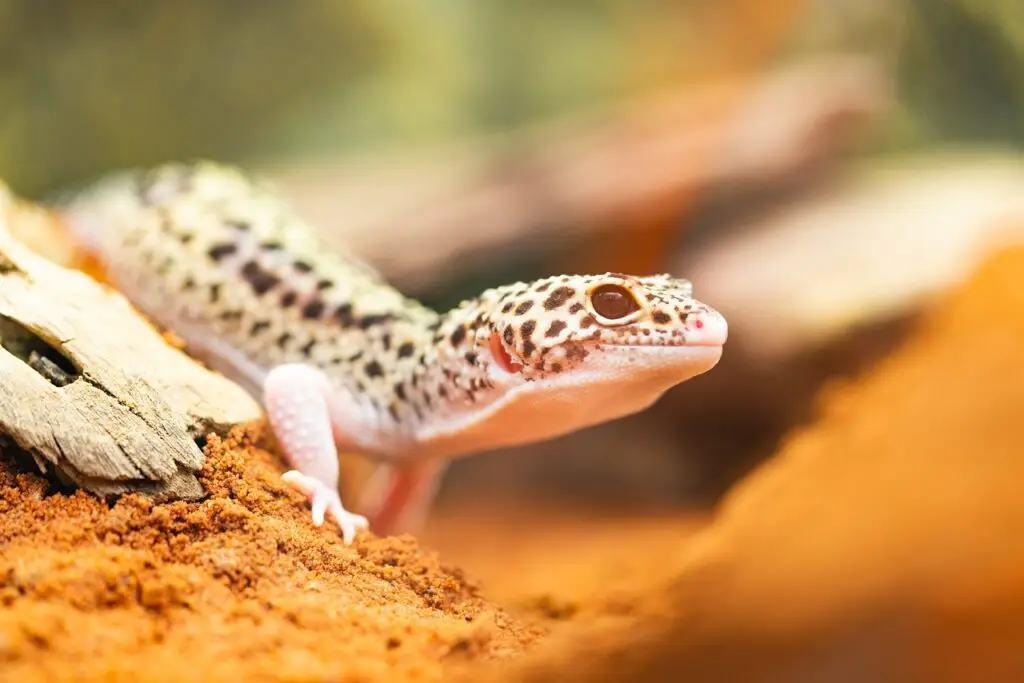Can Reptiles Feel Pain?
The question of whether reptiles can feel pain has fascinated scientists, pet owners, and animal welfare advocates for decades. As creatures that often appear stoic and unexpressive, reptiles have historically been perceived as less capable of experiencing emotions or sensations like pain. However, advancements in neurobiology and behavioral science have significantly altered this perspective.
In this article, we will delve into the anatomy, physiology, and behavior of reptiles to explore their capacity to feel pain and what it means for their welfare and care.
Defining Pain: A Biological Perspective
Pain, from a biological perspective, is often discussed in terms of the nociceptive pathway, which involves a series of steps to detect, transmit, and process harmful stimuli. Let’s break this down further:
Nociceptors:
- These are specialized sensory receptors that respond to damaging or potentially harmful stimuli. They are activated by a variety of noxious stimuli, including mechanical, thermal, or chemical changes.
- The nociceptors have a similar structure in mammals, birds, and reptiles; the main difference between them lies in the type of stimulus each shows sensitivity towards.
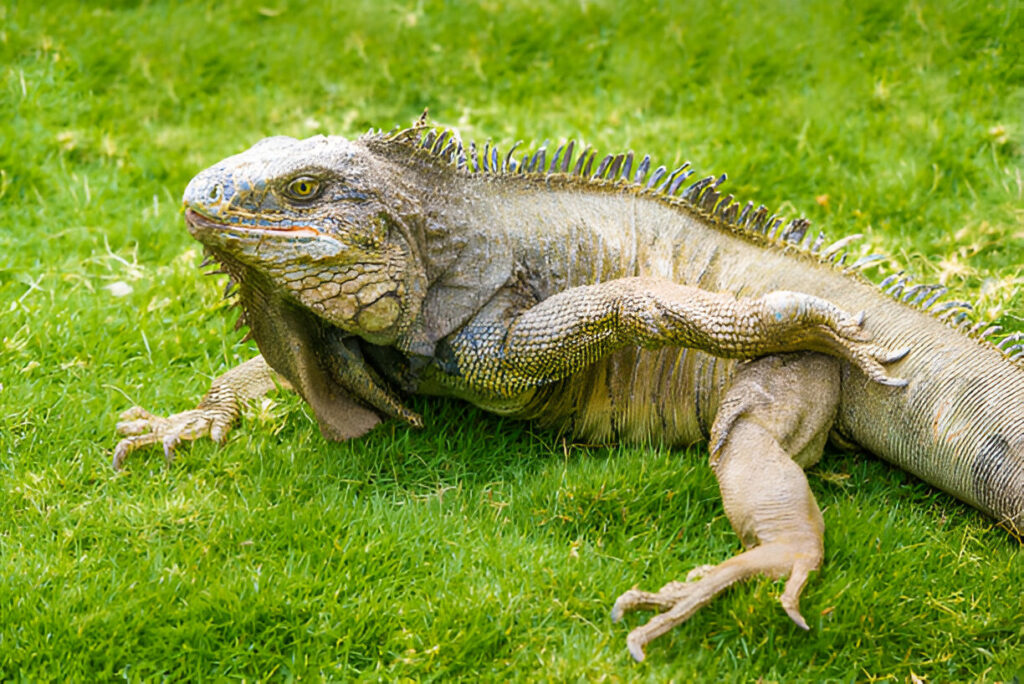
The Nervous System
The nervous system, on receiving the above-mentioned signals of pain from nociceptors, performs the necessary action. A series of neurons in the form of electrical impulses conduct this transmission.
- In mammals and birds, the information of pain reaches the spinal cord through primary afferent fibres which synapse with the secondary neurons that transmit the information to the brain. It is called the spinothalamic tract.
- In reptiles, the spinal cord performs a similar function, but the exact mechanisms of transmission of nociceptive signals may differ in their complexity or efficiency because of differences in the structure of the nervous system.
The Brain:
- Once the pain signals reach the brain, they are processed in various areas, most notably in the thalamus, which acts as a relay station, and the somatosensory cortex, where the physical aspects of pain, such as location and intensity, are processed.
- The emotional and affective components of pain are processed in other areas, such as the anterior cingulate cortex and the insula.
While the pathways and brain regions are fairly clear regarding the processing of pain in mammals and birds, the brains of reptiles are somewhat different. For instance, reptiles have much less developed forebrains, and whether they experience pain with the emotional intensity seen in mammals or birds is uncertain.
Pain in Reptiles:
While there is growing evidence that reptiles have nociceptors and can exhibit responses to noxious stimuli, whether they experience pain as mammals or birds do remains a point of debate. There are several aspects:
Nociceptive Responses:
Reptiles, including lizards, turtles, and snakes, have been shown to possess nociceptors that respond to noxious stimuli. It would seem that they are capable of behaving in a manner to indicate pain through withdrawal reflexes or avoidance behavior.
Neurological Evidence:
The reptilian brain does not possess many of the higher-order structures present in mammals, such as a well-developed neocortex. This calls into question whether or not reptiles are truly experiencing the emotional or conscious components of pain in a manner similar to humans. Some studies suggest that reptiles have a more simple mechanism of pain processing, but such would not exclude them from being able to feel pain in a more primitive or less conscious manner.
Behavioral Evidence:
Behavioral changes after an injury can be observed in reptiles and may indicate that they are suffering or such behavior has evolved in response to injury to prevent further damage. Thus, a turtle will not walk on a surface that hurts whereas a lizard will not use an injured limb.
Reptilian Nervous System: The Basis for Pain Perception

Image by Pavan Prasad
Reptiles have a central nervous system (CNS) comprising a brain and spinal cord, as well as a peripheral nervous system (PNS) that includes nociceptors. Studies have shown that reptiles possess the necessary anatomical structures to detect noxious stimuli:
- Nociceptors: Research indicates that reptiles have nociceptors similar to those found in mammals. These receptors respond to harmful mechanical, thermal, and chemical stimuli.
- Spinal Cord Pathways: The spinal cord in reptiles transmits sensory information to the brain. While it is less complex than that of mammals, it is sufficient for processing nociceptive signals.
- Brain Structures: The reptilian brain, particularly the forebrain and midbrain, plays a role in processing sensory information. Though less developed than mammalian brains, these structures are capable of generating behavioral responses to pain.
Behavioral Evidence of Pain in Reptiles
Behavioral evidence for reptile pain supports the fact that they do indeed behave in reaction to noxious stimuli in ways that imply discomfort or distress. These behaviors have been used continuously in research studies as indicators of the possible presence of pain in these animals. Let’s look into the specifics of such behaviors:
Avoidance Behavior
- Behavioral Description: Avoidance behavior is common in reptiles when exposed to noxious stimuli. It involves an active effort of the animal to flee away or prevent itself from further exposure to the painful cause. Most of the time, it happens as a learned behavior after the experience of insult or distress.
Examples are withdrawal of the limb when the lizard withdraws its limb in response to a needle prick or hot surfaces; thus, the movement is reflexive and protective to further injuries. Other forms of avoidance include attempts at escaping from the environment and/or avoidance of the particular associated area with painful experiences.
- Scientific Significance: Avoidance behavior is considered in many respects a definitive indicator of pain because it implies that the animal has learned to recognize harmful stimuli and takes steps to prevent them.
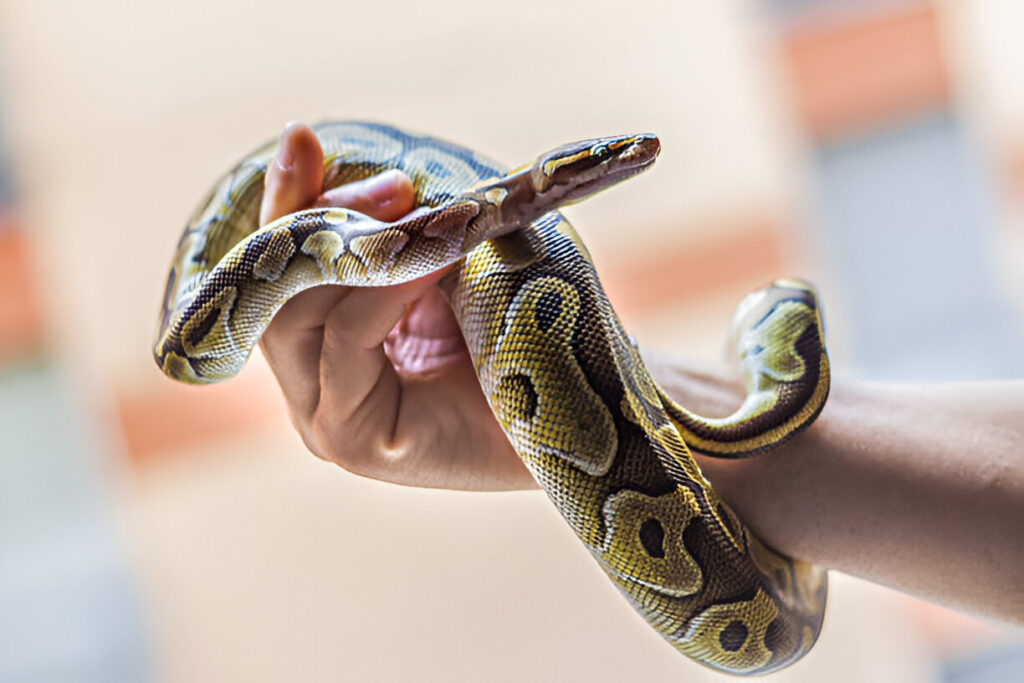
Protective Responses
Behavioral Description: Protective responses are those actions that are directed towards minimizing further injury or protecting the injured part of the body. These responses indicate that reptiles are aware of injury and may attempt to modify their behavior in an effort to avoid aggravation.
- Example: If a reptile injures a limb or other body part, there can be a reduction in movement of the affected area. For example, a turtle with an injured leg may hold the limb up or avoid putting weight on it, which helps prevent further damage and provides some relief from pain.
- Scientific Significance: These care actions are in agreement with the hypothesis that reptiles may, like mammals, have a sensation of injury and behave protectively. Such reactions show that the animal is sensitive to pain and through it is motivated to alter its behavior.
Changes in Appetite and Activity
- Behavioral Description: Reptiles in pain can become less active or show a loss of appetite. The pain makes the animal lethargic in general because it is trying to avoid movements that may further irritate it. Feeding behaviors are diminished either by the exacerbation of pain during eating or by the animal not feeling motivated enough to eat when in distress.
- Example: An injured or infected snake may stop feeding and hide or sleep more, while a lizard that has been injured will lie still for a long period of time and avoid interacting with its environment.
- Scientific Significance: Anorexia and lethargy are well-established indicators of pain across a range of animal species. Such behavioral changes serve as common surrogates for pain in reptiles and may indicate that an animal is experiencing some degree of stress or discomfort.
Vocalizations
- Behavioral Description:
Although rare, some reptiles can vocalize or make some kind of sounds when they are in distress, such as hissing or other forms of vocalizing. These are generally associated with defensive behaviors but may also signal discomfort or pain.
Example: A tortoise might make hissing or other sounds when injured or stressed. Similarly, some species of snakes produce a low-frequency humming and/or hissing when they feel threatened or are in pain.
- Scientific Importance:
Vocalizations are less common in reptiles compared to mammals, but can be indicative of pain as well. That some species employ vocalizations either as part of their defensive behavior or when in distress adds further support that reptiles can experience pain.
Behavioral Conditioning (Learning to Avoid Painful Stimuli)

- Behavioral Description:
Some reptiles can learn to avoid painful stimuli after an uncomfortable experience. That would tend to indicate that reptiles possess some sort of painful memory, which is no less a crucial characteristic of all animals said to be capable of pain.
- Example:
If the lizard had an electric shock earlier, then she might avoid this site later – a case of conditioned response against pain. Also, any other tortoise might be harmed with the object; soon it would learn not to come in contact with the same object.
- Scientific Significance:
Ability to learn and remember painful experiences is considered a strong indicator of the fact that reptiles can have not only the capacity to process pain as sensory information but also have an emotional response and memory associated with it.
Changes in Social Behavior
- Description of the Behavioural:
Painful conditions may also be manifested in some reptiles by changes in their social behavior when an individual is in pain. Such features might be minimal interaction with its conspecific or heightened aggressiveness as pain changes mood or interferes with normal interaction.
- Example:
In social species, like some species of lizards, an injured animal may become more solitary or less social. Pain may also manifest as increased aggression or irritability toward other individuals.
- Scientific Relevance:
Changes in social behavior-especially if it is different from the animal’s normal behavior-can be another indicator of discomfort or pain.
Comparative Neurobiology: Reptiles vs. Mammals
The perception of pain in reptiles is often compared to that in mammals. While reptiles lack a neocortex-the area of the brain associated with complex thought and emotion in mammals-this does not preclude them from perceiving pain; rather, it suggests that their pain perception relies on more primitive brain structures, such as the midbrain and hindbrain.
This was also a limiting factor in early studies on pain in amphibians and fish, animals that also lack a neocortex. These studies in such animals have overcome such limitations and have shown that long-lasting behavioral changes occur after injury and that such behaviors can be ameliorated with analgesics. This sets a very strong precedence for similar mechanisms in reptiles.
The Role of Pain in Reptilian Survival
Pain serves an essential evolutionary function by promoting survival. For reptiles, the ability to feel pain helps them:
- Avoid Harm: Pain encourages reptiles to escape harmful situations and environments.
- Promote Healing: Protective behaviors, such as immobilizing an injured limb, facilitate recovery.
- Learn from Experience: Reptiles may learn to avoid situations or objects associated with painful experiences.
Scientific Studies on Reptilian Pain
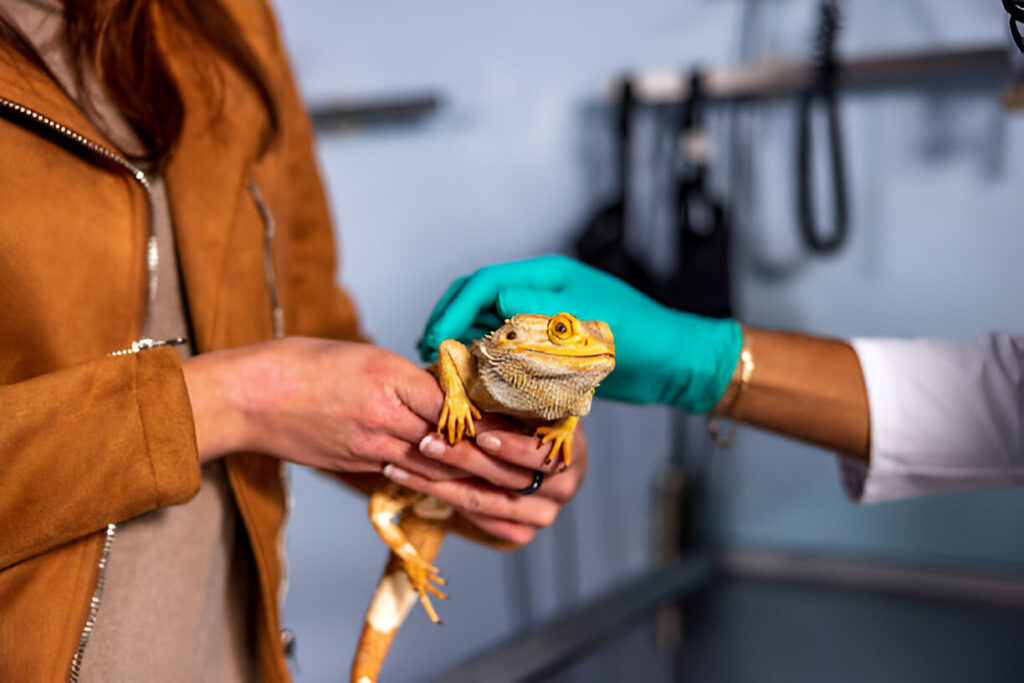
The research on the perception of pain in reptiles has involved various forms of painful stimuli, including thermal and chemical irritants, and pharmacological responses. These studies can give insight into the mechanisms by which reptiles may be able to perceive and respond to pain. Let’s explore these areas in more detail:
Thermal Stimuli
- Study Overview: Reptiles are ectothermic, relying on the ambient environment for regulation of their body temperature. Thermal pain stimuli have been studied to determine whether reptiles show pain responses to extreme temperatures.
Findings: Reptiles, studied in a number of species, including snakes and lizards, demonstrate withdrawal to heat or cold that is greater than their zone of thermal neutrality, thus showing an ability to detect and respond to thermal pain. - For example, reptiles often show withdrawal reflexes or movement to cooler or warmer areas when exposed for too long to temperatures that are too high or low.
- Examples:
- Snakes: In studies done with species such as Boa constrictors, it was noted that they try to move away from the source of discomfort when subjected to noxious heat.
- Lizards: Also, lizards, like Leopard Geckos, have been noted to retreat from surfaces that are too hot or too cold, showing them to be sensitive to thermal extremes that could well be interpreted as pain.
- cientific Significance: These behaviors are of importance in that they suggest an ability to perceive noxious thermal stimuli and to behave in a fashion that suggests discomfort or a protective mechanism that serves to prevent tissue damage.
Chemical Irritants
- Study Overview: The skin or mucous membranes of reptiles have been exposed to chemical irritants to check for pain-like responses. Studies of this nature tend to use irritating substances, including acids or other noxious chemicals, which can potentially cause behavioral responses to pain.
- Results: Application of a chemical irritant, such as capsaicin (the active compound in chili peppers), vinegar, or other mild irritants, on the skin of reptiles often produces observable behavioral responses, including licking or rubbing of the affected area. These behaviors are thought to reflect an attempt to relieve the discomfort from the irritant, as animals may do with chemical injuries.
- Examples:
- Lizards: Various experiments have shown that lizards, like members of the genus Anolis, show rubbing or licking after the administration of an irritant. The area is tended to by the reptile as if in trying to reduce the discomfort.
Turtles: Behavioral reactions to the chemical irritants applied to some species of turtles, including hyperactivity or avoidance of an area where the irritant was applied, indicate that the chemical stimuli cause pain-like effects.
- Lizards: Various experiments have shown that lizards, like members of the genus Anolis, show rubbing or licking after the administration of an irritant. The area is tended to by the reptile as if in trying to reduce the discomfort.
- Scientific Significance: These would suggest that while reptiles are perceiving a chemical stimulus, they behave in ways to try to ameliorate the irritant, and therefore are consistent with the perception of a painful-like phenomenon.
Analgesic Responses
- Overview of Study: They investigated the action of analgesic drugs, especially opioids, on reptilian pain behavior in order to further investigate pain perception in reptiles. It has been seen that opioids, which are well documented to possess pain-relieving properties in mammals, have been administered in reptiles to see if they could alleviate pain responses.
- Results: The administration of opioids, such as morphine or buprenorphine, has been found to reduce pain-associated behaviors in reptiles. For example, reptiles subjected to painful stimuli, such as thermal or chemical, demonstrated a decrease in pain-like behaviors when treated with analgesics.
- This suggests that opioids may similarly act in the reptilian nervous system as they do in mammals, where they block pain perception by binding to opioid receptors in the central nervous system. –
- Examples
- Snakes: In studies with snakes, administration of morphine or buprenorphine reduced defensive behaviors and increased mobility compared to what might normally be reduced due to injury or discomfort in a painful way.
Turtles: The administration of opioids resulted in reduced behaviors associated with discomfort in turtles, manifested by less guarding of limbs and reluctance to move, and suggested a similar mechanism of analgesia.
The Scientific Implication: Depression of pain behaviors in reptiles through the action of analgesics demonstrates clearly that the nervous system is processing pain as a state similar to mammals. Indeed, the usage of opioids to produce pain-relieving effects supports the idea that comparable biochemical pathways exist and work on the processing of pain to be expressed in opioid receptors.
Behavioral and Physiological Correlation
- Study Overview: Most of the studies on analgesic responses also consider physiological markers of pain, such as heart rate, respiration rate, and changes in behavioral patterns. Measuring such indicators before and after the administration of analgesics can help researchers ascertain whether the analgesics are indeed reducing pain-related stress in reptiles.
- Results: Some studies do show that following exposure to noxious stimuli, increased heart rates and respiration rates are common physiological responses seen in reptiles indicative of pain and its associated stress; analgesic treatment depressed these, matching the simultaneously recorded reduction of pain behaviors-like withdrawal or guarding.
- Examples: For example, analgesics administered to Green Iguanas caused a significant reduction in their stress responses, reflecting reversibility in the physiological response of the animals to noxious stimuli under proper treatment conditions.
Other Pharmacological Studies
- Study Overview: Other pharmacological agents besides opioids have been tested on reptiles as well in an attempt to know better the pain-processing mechanisms of the latter. This includes testing nonsteroidal anti-inflammatory drugs (NSAIDs), local anesthetics, and other strategies to control pain.
Findings: Like in mammals, NSAIDs were found to suppress inflammatory pain responses in reptiles. Local anesthetics, like lidocaine, have been applied experimentally to anesthetize parts of the body and thereby provided further support that neural pathways involved in nociception are present in reptiles.
Examples include the following: In species like the Bearded Dragon and Leopard Gecko, topical application of lidocaine depressed the reflex withdrawal to noxious thermal or mechanical stimuli, indicating that the sensory mechanisms are responsive to such treatments.
Ethical Implications and Animal Welfare
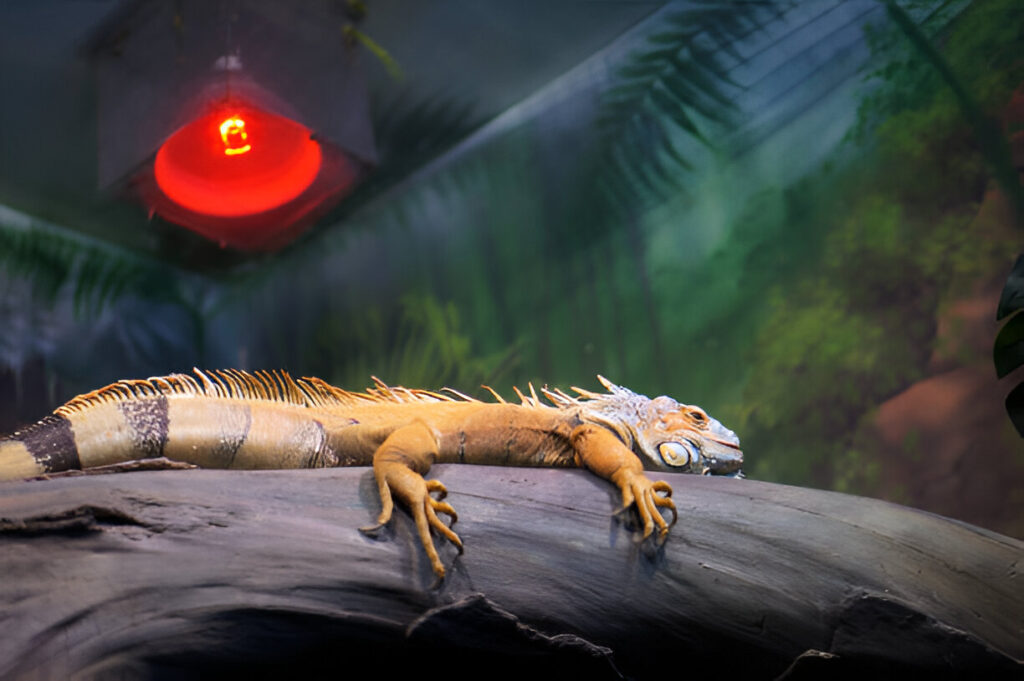
The realization that reptiles can perceive pain has deep ethical and practical implications:
- Caring Better: Owners and veterinarians should make sure pain management is considered in captive reptiles, especially during medical procedures or when injuries occur.
- Humane Treatment: The fact that reptiles do feel pain brings into sharp focus the need for humane treatment both in captivity and in the wild.
- Legislation: Laws concerning the treatment of reptiles should reflect their acknowledged capacity to feel pain. This would include the regulations concerning their capture, transportation, and use in research.
Pain Management in Reptiles
Pain management in reptiles is very challenging due to their unique physiology and behavior. Some effective strategies that can be dealt with include:
- Analgesics: Drugs like NSAIDs and opioids can be used, but dosages should be very carefully worked out owing to the slow metabolism of reptiles.
- Environmental Modifications: Providing a comfortable and stress-free environment can aid in pain relief and recovery.
- Monitoring: Regular observation of behavior and physical condition helps in the early detection and addressing of pain.
Debunking Myths About Reptilian Pain
There are a lot of misconceptions going around about reptiles and their feelings of pain. Some of the common myths are that:
- Reptiles Are Too Primitive to Feel Pain: While less complex, reptiles possess the basic neural components necessary for the perception of pain.
- Reptiles Don’t Show Pain: Their behavioral responses to pain are often subtle but observable with due care.
- Pain Doesn’t Matter in Reptiles: The use of ethical consideration includes all animals that can suffer, irrespective of perceived complexity.
Conclusion
The evidence weighs heavily on the conclusion that reptiles do possess the capacity to feel pain, based on a foundation in neurobiology and demonstrated in behavioral studies.
This capacity, when realized, deepens our understanding not only of reptilian biology but also instills in us a greater degree of care and respect for the animals. As our knowledge about reptilian pain continues to grow, so too must our commitment toward ensuring their well-being in captivity and the wild.
How do reptiles experience pain?”“Pain relief for reptiles”“Reptile pain management”
Yuns Legdm is a passionate advocate for pet care and the founder of this website, dedicated to providing valuable information for fellow pet lovers and veterinary professionals worldwide. With a deep love for animals, Yuns created this platform to connect passionate pet owners with expert insights from veterinarians around the globe.
This website grows with you—the passionate pet owners and veterinary experts—creating a trusted space where knowledge, experience, and love for animals come together. Whether you’re seeking advice on pet health, nutrition, or general well-being, this platform is here to support you on your journey of responsible and loving pet care.


